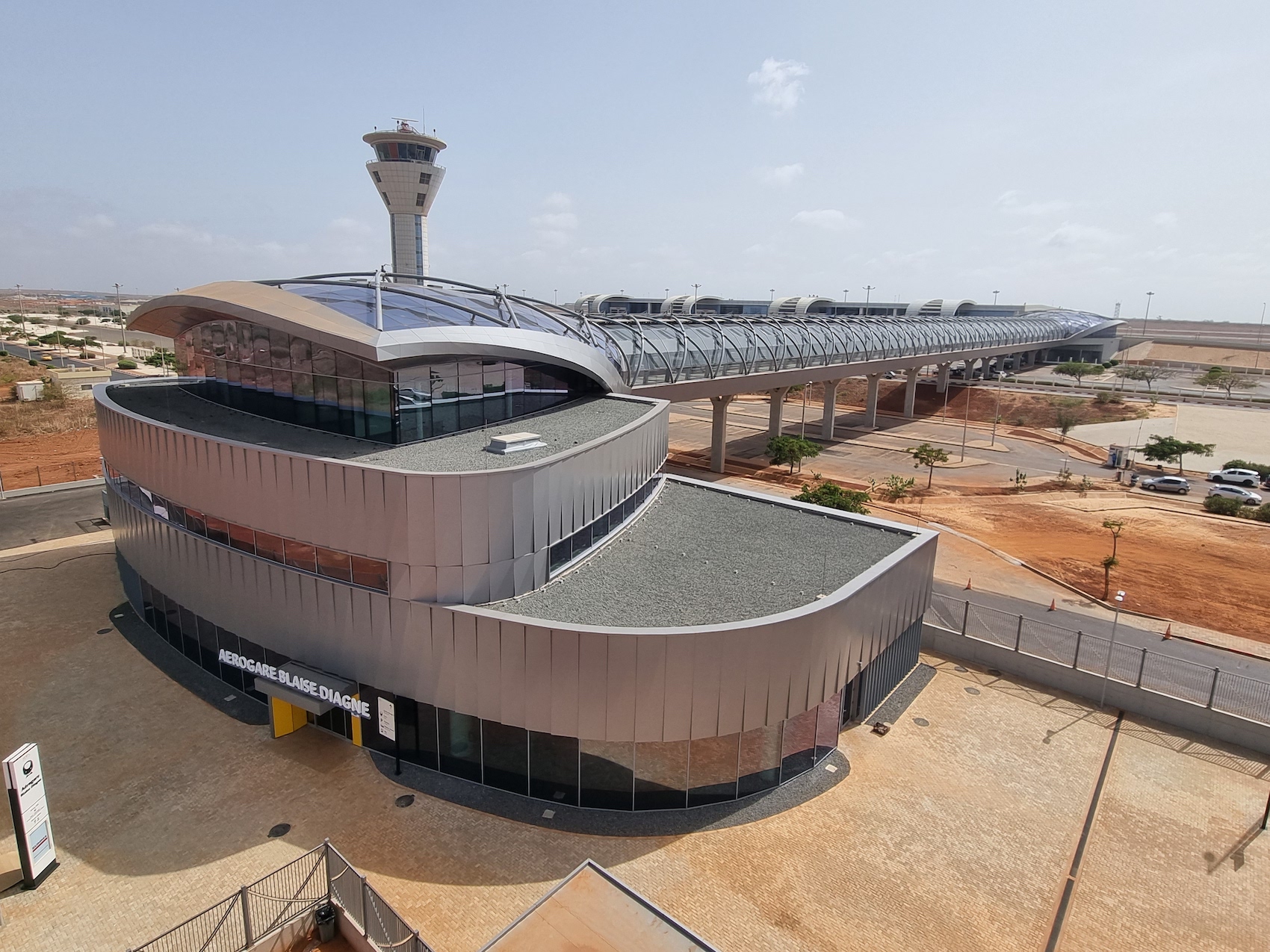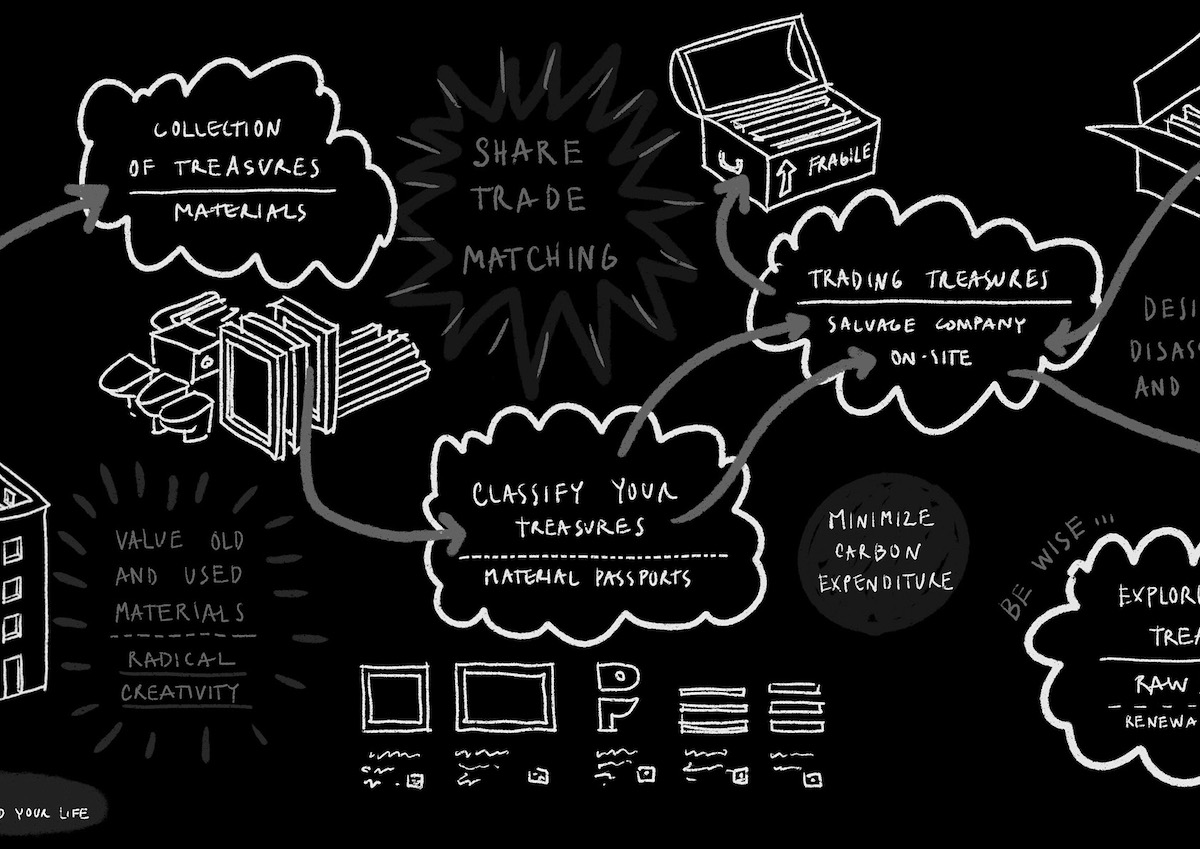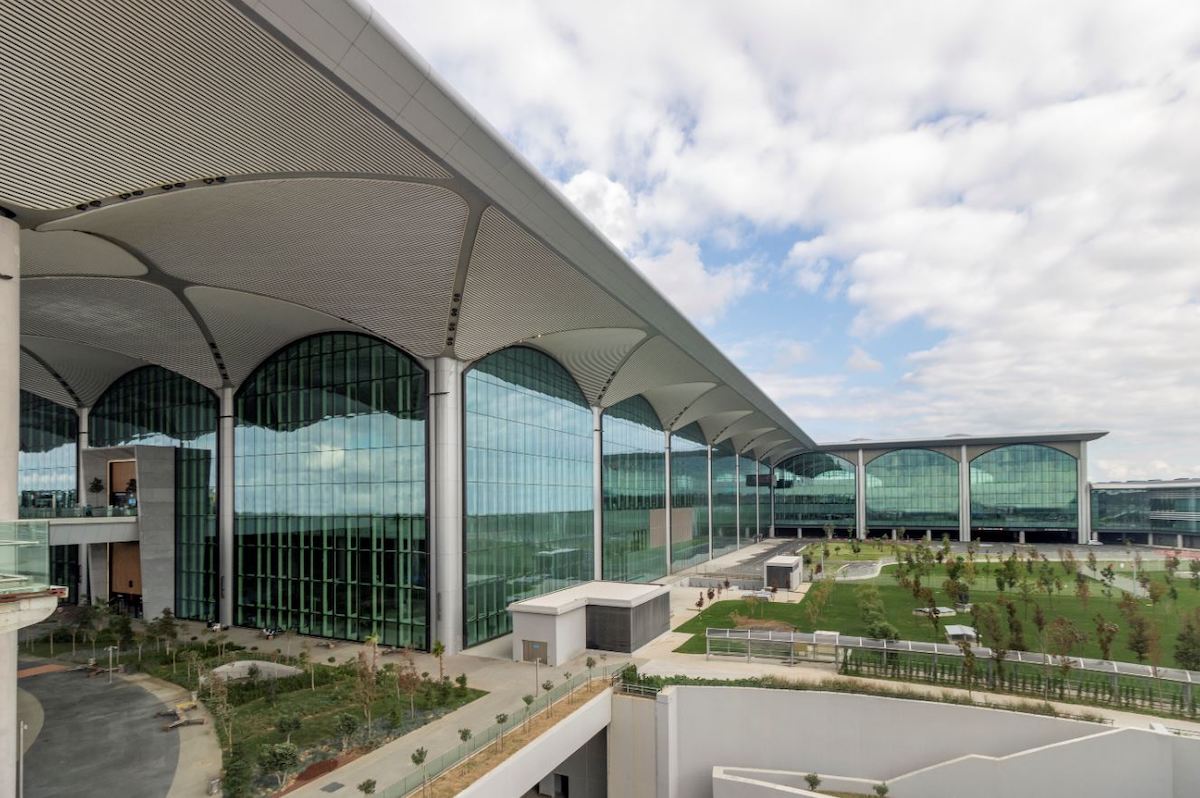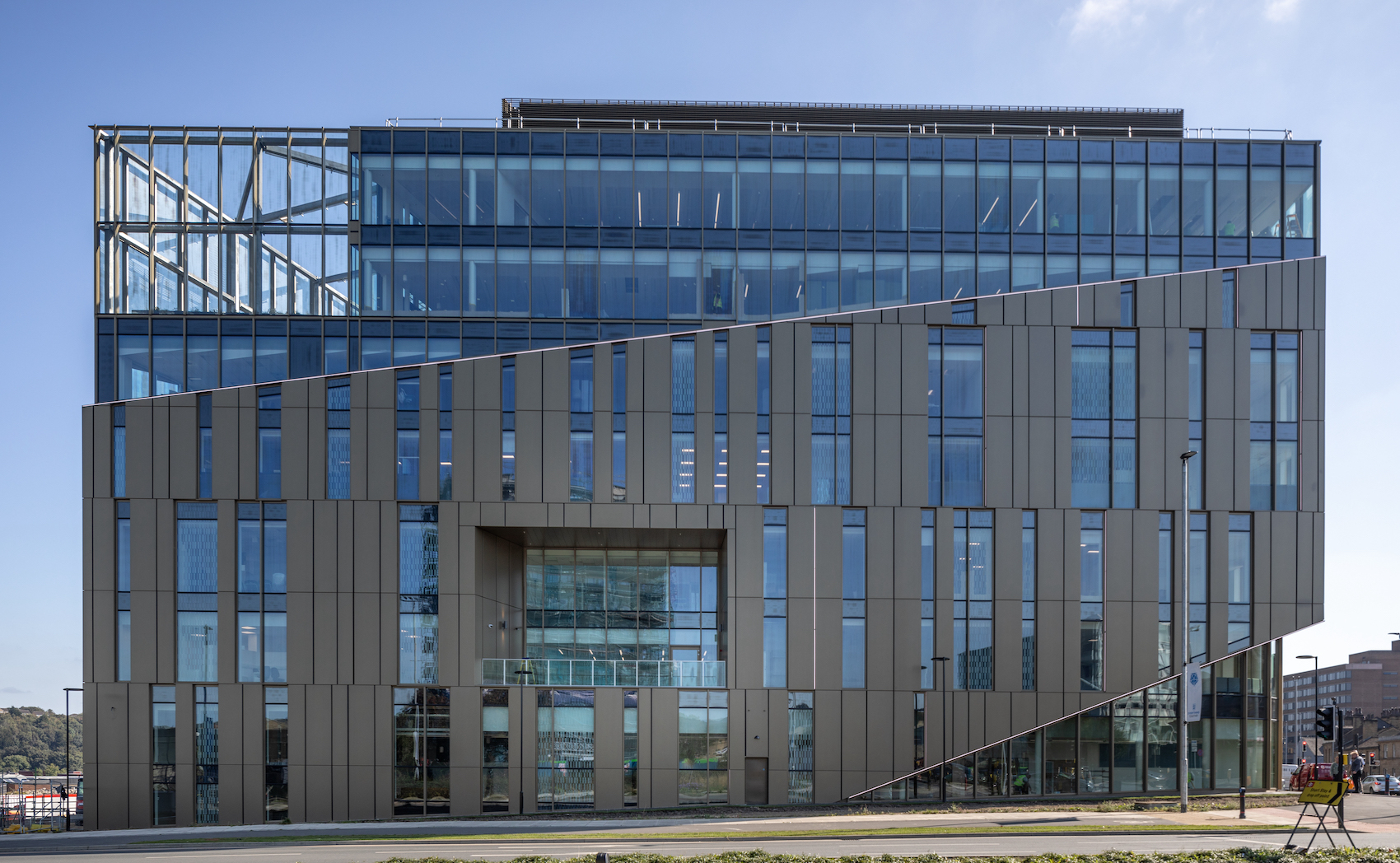An innovative sundial in Hull city centre by Tonkin Liu responds to its historic context
Won in competition, Solar Gate by Tonkin Liu is a 10 metre-high sundial that uses solar alignment to mark significant times and dates in Hull, East Yorkshire. The two-shell structure is designed to respond to the historic events and cultural context of its Queen’s Gardens site, which is adjacent to Beverley Gate.
The artwork’s theme of ‘time’ is inspired by events that took place at Beverley Gate in 1642. On the 23rd of April at 11.00, 17:00, and 18:00, King Charles I was denied entry to Hull three times by the governor Sir John Hotham. The city’s act of defiance was regarded as a key event in the English Civil War that led to the fall of the monarchy. Sixteen sun angles were derived from times and dates, chosen to celebrate Hull’s history and world events. When a beam of sunlight passes through an aligned pair of apertures, it lands on a corresponding disc on the ground, which describes the event.
The ultra-thin, self-supporting sculpture is constructed from 4mm stainless steel plates. It measures four metres wide, one-metre deep at the centre, and tapers to 100mm at the two open edges. Viewed from these edges, the sculpture reads as two curving and corrugated surfaces, which are joined without the aid of any additional supporting internal structures.
The sundial’s structural strength is derived solely from its shell-like form. Invented by Tonkin Liu and developed in collaboration with Arup over the past nine years, the biomimetic technique is called shell lace structure. Its form mimics the geometry of mollusk shells, where the curvature, corrugation and distortion provide a direct correlation between form and strength. This obviates the need for any substructure. The surfaces of the structure are made out of flat sheets, which are curved and joined to make rigid forms.
Arup employed algorithms to test the form and optimise the plate arrangement in response to movement and stresses in the steelwork. This linked the geometry to structural analysis in-real time, allowing options to be critiqued immediately. The pitch and variation of the undulations were finely adjusted to bring the structural forces along the seams close to the capacity of the stainless steel.
Coloured stress diagrams produced by Arup provided the data that Tonkin Liu used to parametrically perforate the structure, removing unnecessary material and creating a pattern for the artwork. As the height increases and the structural demand diminishes, the surfaces become more perforated, in turn reducing wind load and allowing the sculpture to become more delicate. The structure was fabricated from laser-cut stainless steel sheets in Hull by specialist metal fabricator Pearlgreen Engineering. The sheets were welded to form the two shells. They were then spray-painted white, joined together and moved to site as a single piece, before being craned into place.























